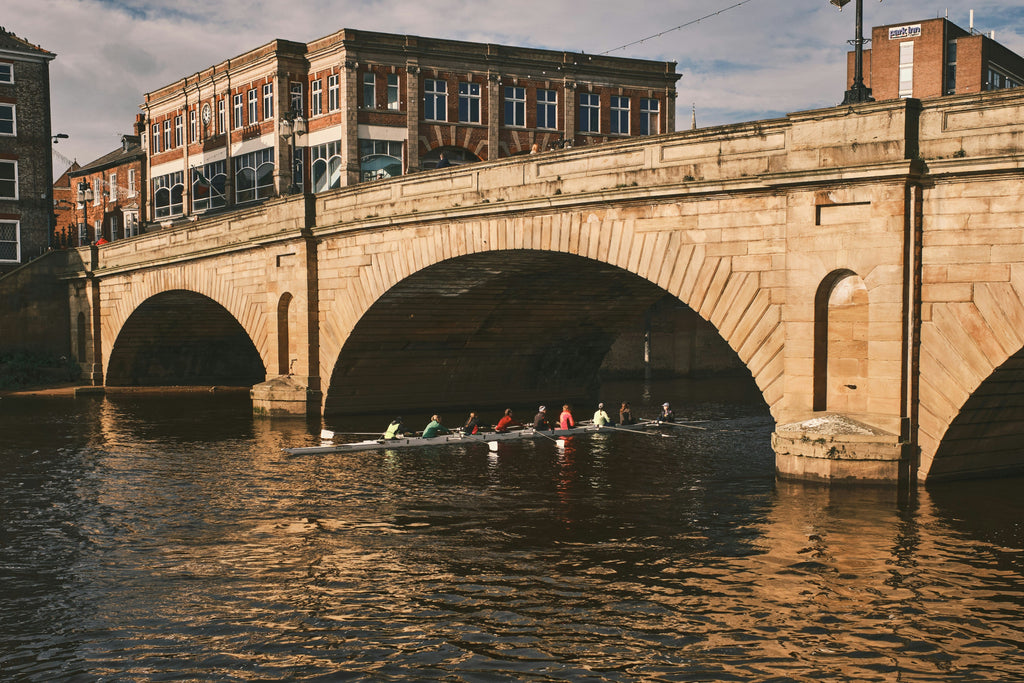The impact of cleaning products on the health of our rivers and waterways - and how you can help

In 2024, we announced a new partnership with British Rowing, the governing body for the sport of rowing (both indoor rowing and rowing on water). Working together, our mission is to continue to educate consumers about the impact that toxic household cleaning products can have when discharged into the water systems, and how we can all work together to change this and make a real difference.
Chemical pollution from cleaning products significantly impacts the health of rivers and waterways in the UK. Many cleaning agents contain chemicals such as surfactants, phosphates and other compounds that, when introduced into aquatic environments, can harm wildlife and disrupt ecosystems.
Key statistics on cleaning products’ impact on river health and water quality:
Water quality assessments: According to the Environment Agency's data from 2020, all English rivers failed to meet overall quality tests for pollution. Not a single river achieved good chemical status, and only 14% of rivers in England reached good ecological status. Read the full report from WildFish.
In 2024, The WaterBlitz - led by Earthwatch - revealed that 61% of 2,300 surveyed sites exhibited poor water quality, with high levels of nitrates and phosphates—nutrients often linked to household cleaning agents. Additionally, the study detected pharmaceuticals and stimulants, indicating a complex mixture of pollutants affecting freshwater bodies. More info on this via Imperial College.
Chemical pollution from cleaning products
The introduction of these chemicals into waterways can lead to:
Eutrophication: Excess nutrients, such as phosphates, can cause algal blooms that deplete oxygen levels, leading to dead zones where aquatic life cannot survive
Toxicity to Aquatic Life: Surfactants and other chemicals can be toxic to fish, invertebrates, and plant life, disrupting food chains and reducing biodiversity.
Bioaccumulation: Certain persistent chemicals can accumulate in the tissues of organisms, leading to long-term health effects and potential entry into the human food chain.
Chemical presence: A 2024 analysis detected nearly 500 different chemicals across 171 river and groundwater catchments in England. More than half of these substances are classified as very toxic, toxic, or harmful to aquatic life. Notably, the presence of surfactants—commonly found in cleaning products—was highlighted as a concern due to their potential environmental hazards. The Guardian
Additional threats to river health
Rivers in the UK face multiple threats, beyond chemical pollution from cleaning products:
Poor regulation, neglect and water company sewage discharges: Decades of weak regulatory enforcement and insufficient investment in infrastructure have contributed significantly to deteriorating river health. Regular untreated sewage discharges by water companies pollute waterways, leading to harmful bacterial levels, nutrient overload, and ecological damage. 2024 saw an 105% rise in raw sewage discharges
Pet flea treatments: Chemicals used in flea treatments for pets can enter rivers, negatively impacting aquatic life by harming insects and crustaceans crucial to river ecosystems. Learn more at Freshwater Biological Association
Agricultural activity: Fertilisers and pesticides runoff from agricultural land contributes to nutrient pollution, causing eutrophication, algal blooms, and subsequent depletion of oxygen critical to aquatic life. Learn more from the Soil Association
How you can help make positive choices to improve river health
Individuals can make meaningful contributions to river health by:
Choosing environmentally friendly products: Opt for cleaning products that aren't harmful to aquatic life, such as those by Delphis Eco, reducing harmful chemicals entering waterways
Participating in campaigns: Join groups such as River Action UK , actively engaged in improving UK rivers, and Surfers Against Sewage , which addresses pollution and advocates policy change
Citizen science & monitoring: Take part in events like The River Trust’s Big River Watch , empowering communities to monitor river health. River Action UK's River Rescue Kit also provides practical tools for citizen science efforts, enabling people to diagnose river conditions effectively
Monitoring invertebrate life: Employ methods from The Riverfly Partnership to track invertebrate populations as indicators of water quality. This monitoring helps detect and respond quickly to pollution incidents, providing valuable long-term data on river ecosystem health
Advocacy and legal recognition: Lobbying and advocacy are essential for systemic change. Notably, the River Ouse has become the first river in the UK to have its rights legally recognised by a local authority, setting an important precedent for river protection and governance. Engaging with local authorities and policymakers to replicate this recognition for other rivers can substantially bolster environmental protections.

Leave a comment